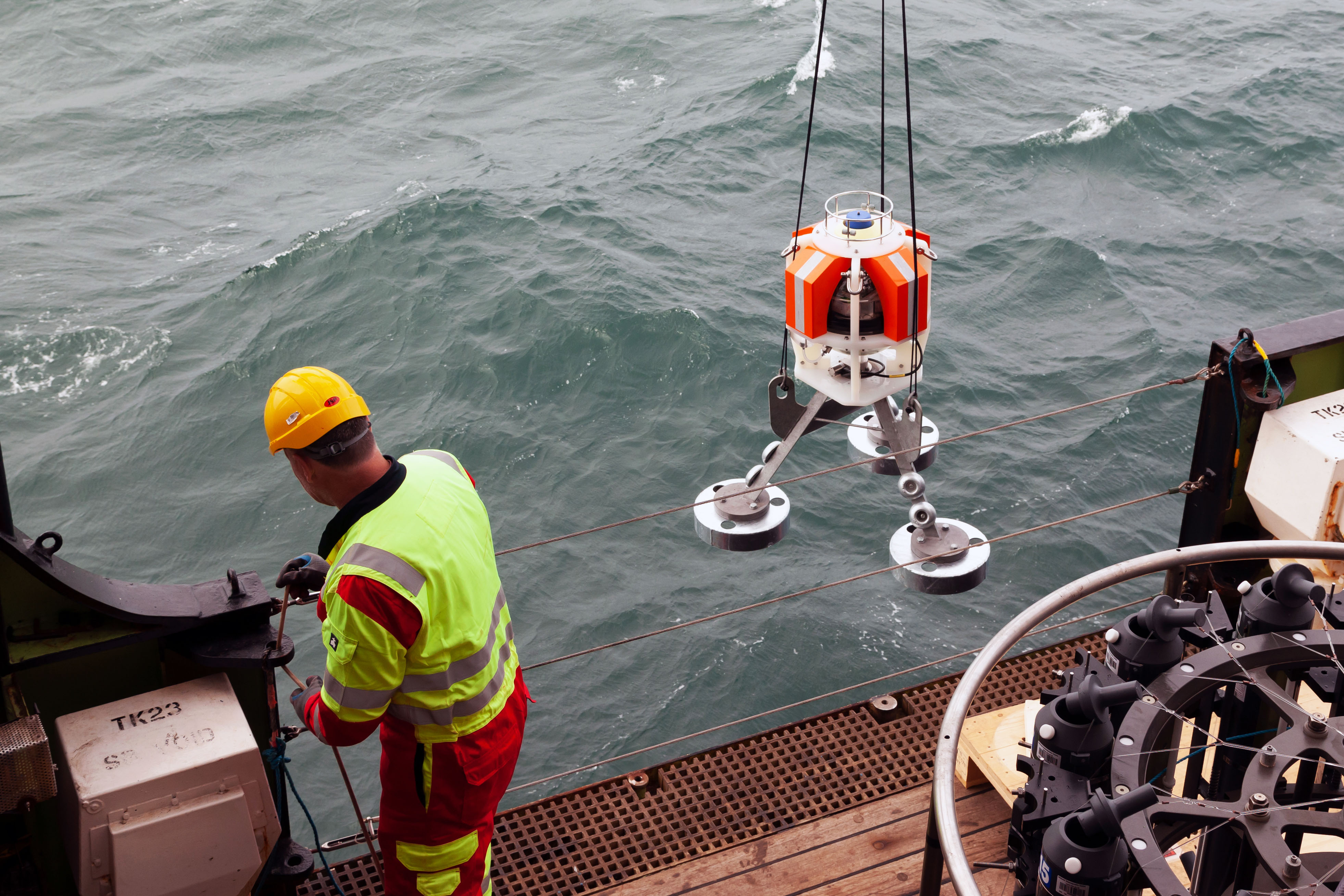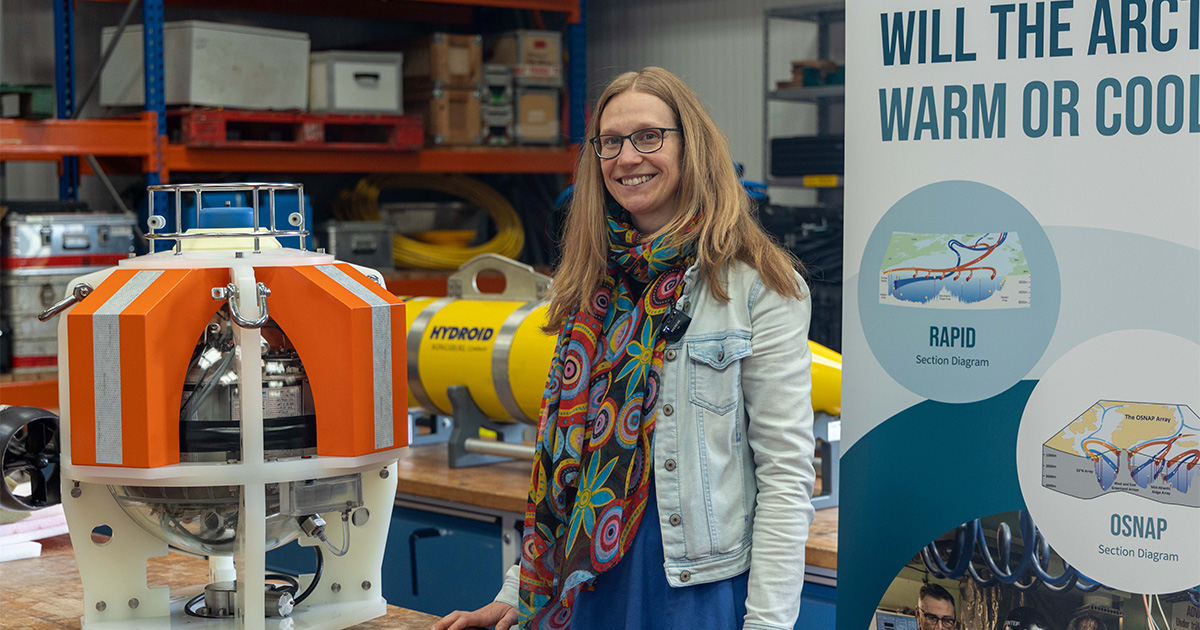Marine scientists have deployed new hi-tech deep-sea instruments on either side of the Atlantic Ocean in an effort to improve measurements of the strength of global ocean currents that drive much of the Earth’s climate.
The Atlantic Meridional Overturning Circulation (AMOC) is a large system of ocean currents that transports warm surface waters from the tropics northward towards the subpolar and Arctic regions. There, the waters cool, become denser and sink before returning southward at depth. In doing so, this vast ‘conveyor belt’ movement of water is a major factor in controlling global heat distribution, regional sea level changes, the ocean’s absorption of carbon and European weather.
To help measure the AMOC’s impact on our changing climate, scientists from the Scottish Association for Marine Science (SAMS) in Oban have for the first time deployed two deep-sea pressure instruments, known as bottom pressure recorders (BPRs). One BPR has been placed in the north-east Atlantic and one in the Labrador Sea to record regular changes in sea surface height.
The two ‘Fetch’ AZA instruments, developed and built by UK marine technology firm Sonardyne, have been placed thousands of meters below the sea surface where they will record the pressure at the seabed which is due to the weight of water above the instrument. The instruments can precisely detect variations of pressure that are equivalent to a sea-surface height change of less than one centimeter. Deployed for up to 10 years, this will allow the researchers to compare the two locations and measure changes in the speed and strength of the AMOC, which will provide crucial data to inform climate predictions.
The north-east Atlantic Fetch AZA is deployed 255 kilometers south-west of Rockall. (Image credit: Ben Moat)
The north-east Atlantic instrument was deployed from the RRS James Cook during the Overturning in the Subpolar North Atlantic Programme (OSNAP) research cruise, jointly led by SAMS and the National Oceanography Centre (NOC) last summer. The western instrument was deployed by SAMS oceanographer Dr. Sam Jones during a cruise on board the RV Meteor, led by the German marine institute GEOMAR.
SAMS oceanographer Dr. Kristin Burmeister, Co-Chief Scientist on the OSNAP cruise said: “This is the first time these Sonardyne pressure sensors have been used in ocean physics, but they could be a game changer in how effectively and efficiently we can measure the vast AMOC. Once we know the speed of these currents, we can work out the volume of water being moved and then calculate how much heat is being transported. This heat is important to the climate of Europe and gives the continent its relatively mild weather. These currents impact our weather and climate, particularly in the UK.
“The influence of the AMOC on the Earth’s climate is so significant that there is an urgent need to better understand its strength and heat transfer. That data will allow us to feed into the various climate models that help governments and society prepare for the changes in our climate in years to come.”
The east side of the Atlantic Ocean is typically around 20 centimeters higher than the west side, but the flow of the water does not go east to west, as the opposing force of the Coriolis effect from the rotating Earth causes flow south to north.
The AMOC transports roughly 1.25 Peta (10^15) Watts of energy from the Tropics towards the subpolar and Arctic regions—more than 60 times the present rate of world energy consumption. Despite being so influential in our climate, it has only been continuously measured for 19 years, limiting our long-term understanding of its relation to climate. As the pressure sensors will remain on the seabed for up to 10 years, the data they gather can be transmitted wirelessly through the water to a ship or even an uncrewed platform, without the need to recover them.
Geraint West, Head of Science at Sonardyne, said: “The Ambient-Zero-Ambient (AZA) technique used in the Fetch AZA is a game-changing technology as, previously, the inherent drift of pressure sensors meant that long term observations were compromised, limiting their use for long-term studies. AZA overcomes this by regularly comparing the instrument’s pressure sensor to an internal high accuracy barometer.
“Mastering this technique took years of investment by Sonardyne and while it’s already been used, at scale, in other sectors, we are hugely excited to see it now being put into use in physical oceanography, not least in a project that will aid our understanding of key climate drivers.”



